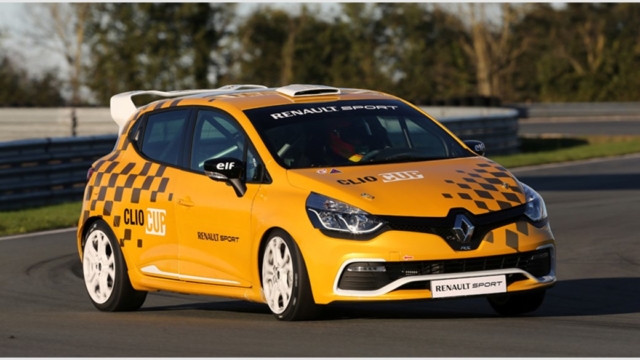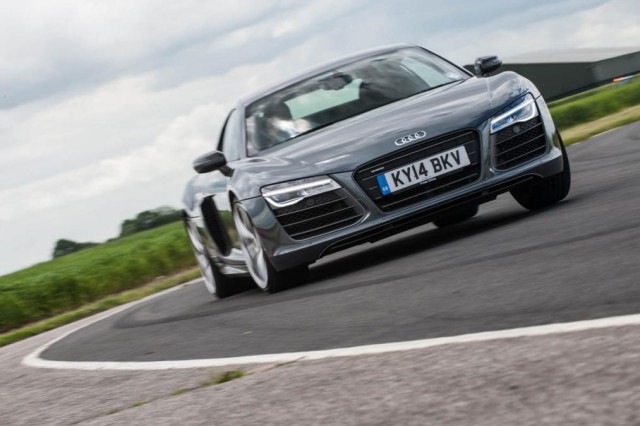One of the more interesting aspects of motor racing is the value of grip and poise relative to horsepower. Speak to the uninitiated and more often than not, their assumption is that big motors trump everything else. While there’s plenty of truth behind this sentiment, the reality is that it’s a complicated interaction between a number of different factors like drivetrain layout, tire size, weight, and power that determine a car’s performance on a road course.
So then, most would probably assume that the beefy Audi R8 with nearly 600 horsepower would make an absolute mockery of Renault’s little Clio Cup. Sure, the French economy car is small and light, but without a thumping V10 in the back like the R8, the teutonic titan would surely make mincemeat of the little Clio. Granted, this comparison is staged on a reasonably tight track, but it only shows how wrong those sorts of assumptions can be.
Aside from tire size and weight, one must also consider the way in which these cars are intended to be used. While most would assume the R8 is a bloodthirsty, relentless monster, remember it’s made by Audi — the people who packaged understeer for the masses. The R8 is sharp-edged compared to an A4 Avant, but at the end of the day, it is intended to make the commute in a reasonably civilized fashion and not rattle the fillings out of the occupants’ teeth. Therefore, it has to be somewhat comfortable and accommodating, and this reduces its performance in direction changes, late braking, and long-sweeping corners. Yes, the performance is outrageous, but compared to the Clio Cup, it is slightly compromised.

The FWD Clio Cup, thanks to its short wheelbase and stiffened suspension, is happy to oversteer, as seen here.
Contrast that ethos with that of the Clio Cup. While it’s based off an economy car, it is made purely for racing. It is a nimble, meticulous little machine that can carry more speed into, and through, the corners because of its short wheelbase, slick tires and aggressive suspension setup. Getting groceries in this could lead to heat stroke from the incredible cockpit temperatures, and a chiropractor would have to be consulted after any sorts of long drives, assuming it could be made street legal.
The Audi predictably decimates the little Renault on the straighter portions of the racing circuit, but when it comes to finding that mid-corner speed and even under the brakes, it’s the French econobox that wins out. With only 220 horsepower from the 1.6-turbo, the Renault is gobbled up on straights, but that’s not a massive problem. Ultimately, it’s the hatchback that gets the final word in.
Because the comparison is intentionally hyperbolic, it needs to be said that these sorts of reviews need to be seen in shades of grey. Yes, the Audi has the panache and the incredible, wailing V10, but when it’s designed to get the groceries and go quick, it will never be quite as effective as a focused track terror like the Clio Cup.






















